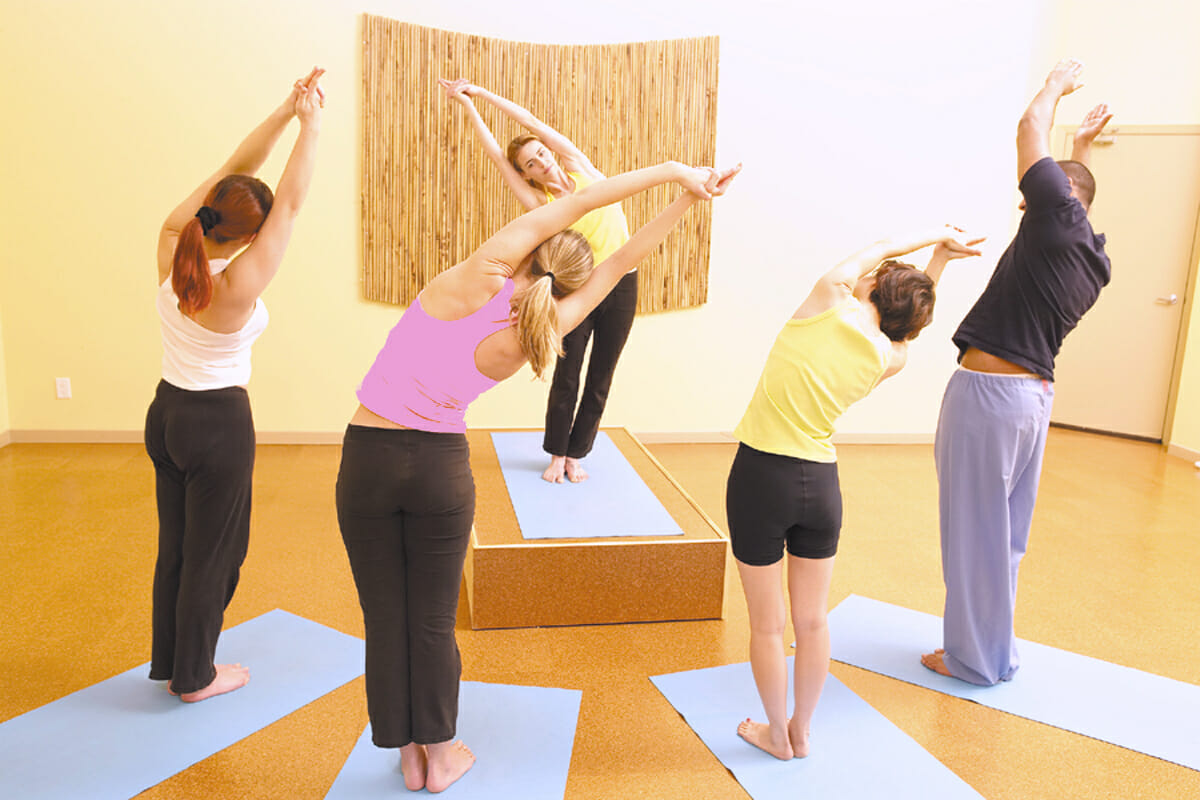Yoga is a mind and body practice. Various styles of yoga combine physical postures, breathing techniques, and meditation or relaxation.
The first mention of the word “yoga” appears in Rig Veda, a collection of ancient texts. Yoga comes from the Sanskrit word “yuj,” which means “union” or “to join.” Yoga is an ancient practice that may have originated in India over 5,000 years ago. Indian monks spread their knowledge of yoga in the West during the late 1890s. Modern yoga teachings became widely popular in Western countries by the 1970s. Yoga is now a popular form of exercise around the world.
The overall philosophy of yoga is about connecting the mind, body, and spirit. Yoga involves physical poses, concentration, and deep breathing. A regular yoga practice can promote endurance, strength, calmness, flexibility, and well-being.
There are six branches of yoga. Each branch represents a different focus and set of characteristics.
Hatha yoga: This is the physical and mental branch that aims to prime the body and mind.
Raja yoga: This branch involves meditation and strict adherence to a series of disciplinary steps known as the eight limbs of yoga.
Karma yoga: This is a path of service that aims to create a future free from negativity and selfishness.
Bhakti yoga: This aims to establish the path of devotion, a positive way to channel emotions and cultivate acceptance and tolerance.
Jnana yoga: This branch of yoga is about wisdom, the path of the scholar, and developing the intellect through study.
Tantra yoga: This is the pathway of ritual, ceremony, or consummation of a relationship.
Chakras
The word “chakra” means “spinning wheel.” Yoga maintains that chakras are center points of energy, thoughts, feelings, and the physical body. According to yogic teachers, chakras determine how people experience reality through emotional reactions, desires or aversions, levels of confidence or fear, and even physical symptoms and effects. When energy becomes blocked in a chakra, it triggers physical, mental, or emotional imbalances that manifest in symptoms such as anxiety, lethargy, or poor digestion.
There are seven major chakras, each with its own focus:
Sahasrara: The crown chakra, which is at the crown of the head, symbolizes spiritual connection.
Ajna: Located between the eyebrows, the third eye chakra has to do with intuition.
Vishuddha: The throat chakra corresponds to immunity and verbal communication.
Anahata: The heart chakra, which is in the center of the chest, influences professional and personal relationships. Any imbalances in this chakra will affect oxygen, hormones, tissue, and organ control.
Manipura: The solar plexus chakra is in the stomach area. It corresponds to self-confidence, wisdom, and self-discipline.
Svadhishthana: The sacral chakra, which is beneath the belly button, connects pleasure, well-being, and vitality.
Muladhara: The root chakra, which is at the base of the spine, connects the mind and body to the earth to keep a person grounded. It controls the sciatic nerves and the parasympathetic nervous system.
Types of yoga
Modern yoga focuses on exercise, strength, agility, and breathing. It can help boost physical and mental well-being. There are many styles of yoga. A person should choose a style based on their goals and fitness level.
Types and styles of yoga include:
Ashtanga yoga
Bikram yoga
Hatha yoga
Iyengar yoga
Kripalu yoga
Kundalini yoga
Power yoga
Sivananda
Viniyoga
Yin yoga
Prenatal yoga
Restorative yoga
Benefits of yoga
Yoga has many physical and mental benefits, including:
building muscle strength
enhancing flexibility
promoting better breathing
supporting heart health
helping with treatment for addiction
reducing stress, anxiety, depression, and chronic pain
improving sleep
enhancing overall well-being and quality of life
Surveys indicate that 94% of adults who practice yoga do so for wellness reasons.
Risks and side effects
It is advisable to consult a medical professional, if possible, before starting a yoga practice.
Many types of yoga are relatively mild and therefore safe for people when a well-trained instructor is guiding the practice.
It is rare to incur a serious injury when doing yoga. The most common injuries among people practicing yoga are sprains and strains.
However, people may wish to consider a few risk factors before starting a yoga practice.
A person who is pregnant or has an ongoing medical condition, such as bone loss, glaucoma, or sciatica, should consult a healthcare professional, if possible, before taking up yoga.
Some people may need to modify or avoid some yoga poses that could be risky given their specific condition.
Beginners should avoid advanced poses and difficult techniques, such as Headstand, Lotus Pose, and forceful breathing.
When managing a condition, people should not replace conventional medical care with yoga or postpone seeing a healthcare professional about pain or any other medical problem.
Source: https://www.medicalnewstoday.com
Written by Hannah Nichols — Medically reviewed by Courtney Sullivan, Certified Yoga Instructor
Exclusive content from CARE Magazine










